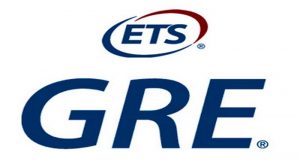 This comparison tool helps the growing number of law schools accepting GRE scores to understand and appropriately interpret those scores in the context of LSAT scores to better inform their admissions decisions. The GRE test can help institutions achieve their admissions goals because it is taken by over half a million test takers annually from a broad range of backgrounds — including science and technology fields — that are relevant to the changing needs of the law profession.
This comparison tool helps the growing number of law schools accepting GRE scores to understand and appropriately interpret those scores in the context of LSAT scores to better inform their admissions decisions. The GRE test can help institutions achieve their admissions goals because it is taken by over half a million test takers annually from a broad range of backgrounds — including science and technology fields — that are relevant to the changing needs of the law profession.
— David Payne, ETS Vice President & COO of Global Education,
commenting on the company’s new GRE Comparison Tool that will allow law school admissions officers to appropriately evaluate prospective law students’ GRE scores against LSAT scores. The Comparison Tool uses test takers’ GRE Verbal Reasoning and Quantitative Reasoning scores, but not the GRE Analytical Writing score (despite the fact that it’s a “very good predictor of first year law school grades”), because the LSAT Writing Sample is unscored. According to ETS, the Comparison Tool’s predicted LSAT scores were calculated using the test scores of 1,587 admitted law school students who took both the GRE and the LSAT. Click here to try using the GRE Comparison Tool.

What Your Clients Say When They Know You Won’t Hear It
Download this 63-page survey report and get the truth about the legal client experience.
 Staci Zaretsky has been an editor at Above the Law since 2011. She’d love to hear from you, so please feel free to email her with any tips, questions, comments, or critiques. You can follow her on Twitter or connect with her on LinkedIn.
Staci Zaretsky has been an editor at Above the Law since 2011. She’d love to hear from you, so please feel free to email her with any tips, questions, comments, or critiques. You can follow her on Twitter or connect with her on LinkedIn.